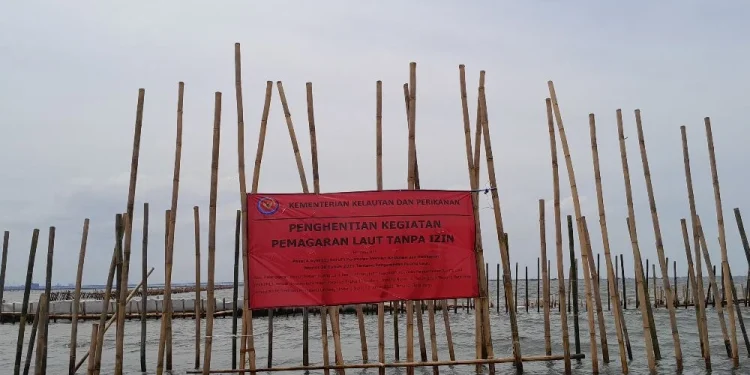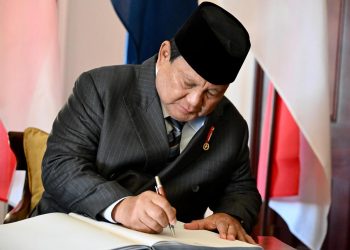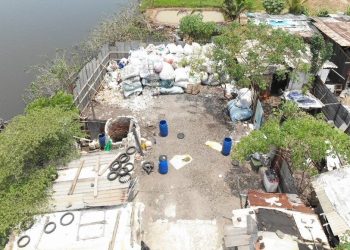Jakarta, Indonesia Sentinel — The mystery surrounding the controversial sea fence in Muara Tawar, Bekasi Regency, West Java, has finally been resolved. Officials have confirmed that the structure, previously unclaimed, belongs to the West Java Provincial Government. The project, a collaborative effort with PT Tunas Ruang Pelabuhan Nusantara (TRPN), has sparked public outcry and legal scrutiny due to a lack of proper permits.
A Sea Fence with Government Ties
Hermansyah, head of the West Java Maritime Affairs and Fisheries Office, revealed in a press conference on January 15, 2025, that the sea fence is part of a broader initiative to redevelop the Paljaya Fish Landing Base (PPI Paljaya). The project includes reclamation efforts to enhance the area’s infrastructure.
“The activity is part of port redevelopment at Paljaya. It involves TRPN, focusing on creating new shipping lanes, deepening docking basins, and improving facilities like auction spaces, offices, and cold storage,” Hermansyah explained.
PT TRPN reportedly leased a 5,700-square-meter area for five years, with a compensation package valued at IDR 2.6 billion (approximately $173,000). The sea fence, constructed to delineate maritime zones and land ownership, has been a key feature of these developments. However, its implementation has drawn criticism for lacking the required permits.
Lack of Permits Leads to Official Action
The sea fence has been sealed by the Ministry of Marine Affairs and Fisheries (KKP) due to the absence of a marine space utilization permit, known as Persetujuan Kesesuaian Kegiatan Pemanfaatan Ruang Laut (PKKPRL).
Pung Nugroho Saksono, Director General of Marine and Fisheries Resources Supervision, emphasized the importance of adhering to regulations governing marine spaces. “We sealed the sea fence to address public concerns over potential violations of marine spatial use. This is part of our commitment to ensuring compliance with the law,” he stated.
According to Pung, the KKP had previously sent a formal warning to the project’s stakeholders on December 19, 2024, urging them to halt all activities until proper permits were secured. The warning followed an on-site inspection by the KKP’s marine police unit, which identified irregularities.
“Reclamation activities in marine zones require PKKPRL. Since this project lacks such permits, it constitutes an unauthorized activity in territorial waters,” Pung clarified.
Public Outcry and Environmental Concerns
The construction of the sea fence has raised concerns among local residents and environmentalists. Critics argue that reclamation projects like these can disrupt marine ecosystems and jeopardize local fishing communities’ livelihoods. The lack of transparency surrounding the project has only intensified public discontent.
Ministry Identifies Owner of Mysterious Sea Fence in Tangerang
Next Steps for the Controversial Project
For now, the Bekasi sea fence remains sealed, pending further legal review and compliance measures. The KKP has reiterated its commitment to upholding marine regulations while addressing public grievances. Meanwhile, the West Java Provincial Government and PT TRPN are expected to clarify their next steps, including obtaining the necessary permits to continue their redevelopment plans.
This incident underscores the delicate balance between infrastructure development and environmental conservation—a recurring challenge in Indonesia’s fast-growing coastal regions. As debates continue, the fate of the Bekasi sea fence serves as a reminder of the importance of regulatory compliance in public projects.
(Becky)


























